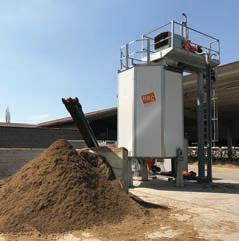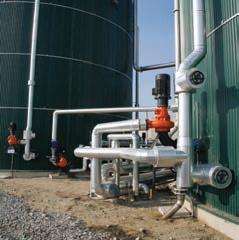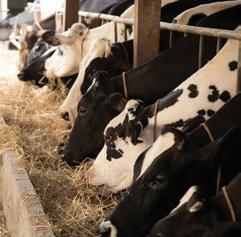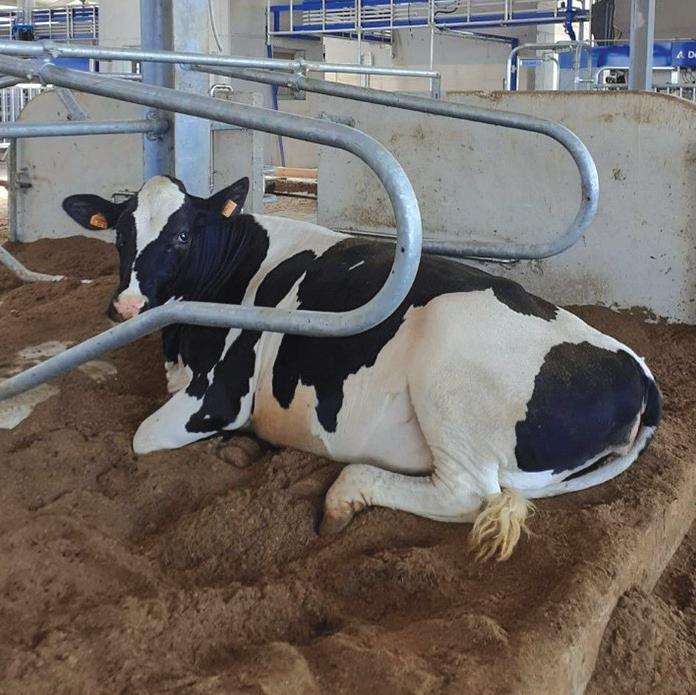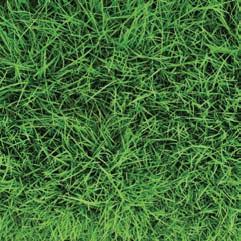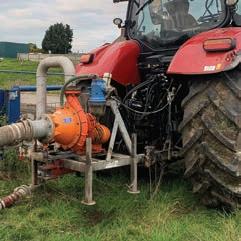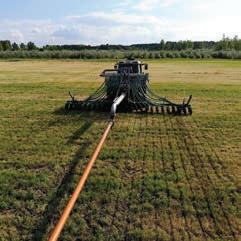
3 minute read
TACKLING AN OUTBREAK
A salmonella infection can be devastating to a dairy herd, as dairy farmer Derek Semmens found when he experienced an outbreak in his calves and milking herd. Dairy Farmer reports.
Cows now get an annual booster against salmonella, says Derek Semmens.
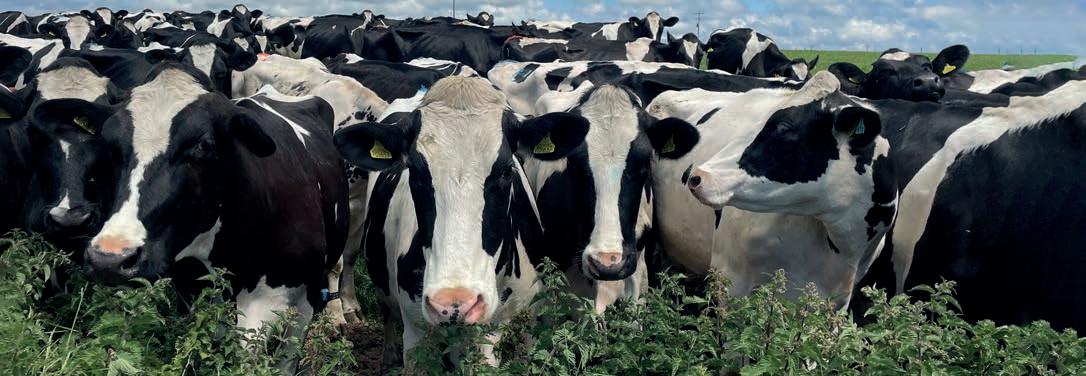
Successfully tackling a salmonella outbreak
Farming on the south west Cornish coast, Derek Semmens milks a 210-cow dairy herd, grazed throughout the summer, alongside an arable operation which includes growing cauli ower for a well-known retailer. e cows at Trendrennen Farm,
Penzance, are milked through a 14:28 herringbone swing over parlour, averaging about 9,500 litres annually, with the milk sold to
Saputo Dairy UK for cheese.
It is a closed herd, with replacement heifers reared on-farm and beef calves sold as stores.
“ e calves were sick in the morning and dead by the a ernoon.
“We thought it was pneumonia, but the post mortem our vet sent o con rmed it was salmonella
Dublin. en the cows started aborting – it was a distressing time.”
Salmonella Dublin is the most prevalent strain found in UK dairy herds and has a range of clinical signs, including abortion, which typically occurs between ve and eight months of pregnancy.
“ e infected cows were aborting about ve or six days a er drying o ,” says Mr Semmens.
“Several cows died a er aborting and milk yields dropped. e calves that recovered from the infection still stand out now, because they are behind on growth.” e outbreak in the calves was particularly damaging because it happened when Mr Semmens was breeding heifer replacements, meaning that he has fewer heifers coming through in that age group.
Mr Semmens has a good relationship with his vet Ma hew Berriman, who has worked with the farm business for 20 years.
“We have a routine visit every two weeks, which I used to see as a major farm expense, but Ma ’s advice is invaluable.”
“Up until last year I was not really aware of salmonellosis in dairy herds, as I had not experienced it.
“I turned to Ma for advice. He said we needed to vaccinate, alongside implementing other biosecurity measures, so we did that.”
Mr Berriman suspected the disease had been present in the herd for a while, but some trigger prompted the outbreak of clinical disease.
Carriers
He says: “Ca le that become infected with salmonella Dublin can go on to become carrier animals, shedding the bacteria intermi ently and contaminating the environment around them.
“ ese carrier animals o en do not show any symptoms and can be di cult to detect, which is why routine monitoring and biosecurity measures are so important.”
As a closed herd, Mr Semmens’ farm was not exposed to the risk of buying in ca le infected with salmonella. erefore, to control the disease within his herd, his vet recommended a vaccination programme supported by wider biosecurity protocols.
“We went straight into vaccinating all the cows and heifers,” says Mr Semmens, who also vaccinates against BVD, IBR, and leptospirosis.
“ e cows will get an annual booster and the heifers will be done three to four weeks before they calve, to help ensure antibodies are passed via colostrum to the calves.”
Preventing salmonella in your herd
JFarmers who are concerned about salmonella should work with their vet to establish the risk of disease.
Alongside quarterly bulk milk testing for salmonella antibodies, this can be done using MSD Animal Health’s new Salmonella Risk Assessment app.
The checklist tool helps vets and farmers to work together to analyse six key areas and consider a multitude of factors on-farm, from calving hygiene to the threat of infection from other herds.
